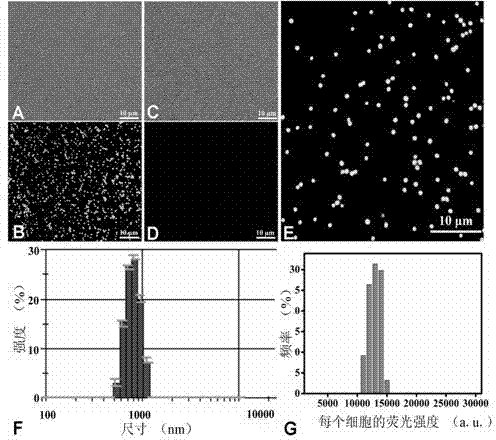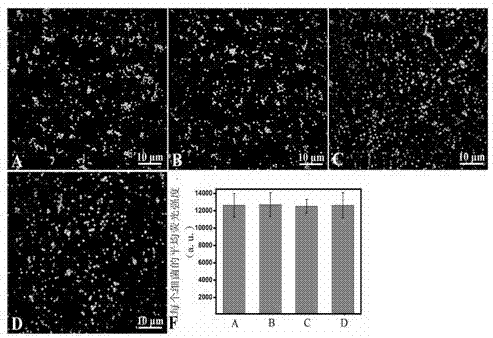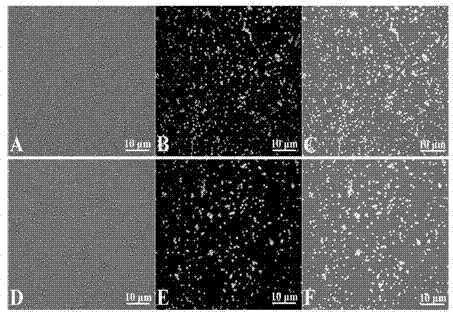Method for detecting viruses and bacteria by fluorescent targeted cells
A technology for targeting cells and fluorescent bacteria, applied in the field of chemical biology, to achieve the effects of high luminous efficiency, good photostability and high fluorescence intensity
- Summary
- Abstract
- Description
- Claims
- Application Information
AI Technical Summary
Problems solved by technology
Method used
Image
Examples
Embodiment 1
[0023] The detection of embodiment 1 H9N2 avian influenza virus
[0024] The method of the present invention will be described in detail below by taking the avian influenza H9N2 virus as an example.
[0025] 1. Method
[0026] 1. Construction of fluorescence-targeted bifunctional cells
[0027] Pick a single colony of Staphylococcus aureus from the agarose plate and put into 100 mL of fresh LB medium (yeast extract: 5 g / L, peptone: 10 g / L, sodium chloride: 5 g / L) Incubate at 37°C for 12 h. In this way, 1 mL of bacterial suspension was added to 99 mL of fresh LB medium and continued to incubate at 37 °C for 12 h, then sodium selenite with a final concentration of 5 mM was added to the bacterial suspension, and incubated for 12 h to obtain selenized Staphylococcus aureus. The selenized Staphylococcus aureus was collected by centrifugation, then transferred to 100 mL of fresh LB medium, and then added to the selenized bacterial suspension with a final concentration of...
PUM
 Login to view more
Login to view more Abstract
Description
Claims
Application Information
 Login to view more
Login to view more - R&D Engineer
- R&D Manager
- IP Professional
- Industry Leading Data Capabilities
- Powerful AI technology
- Patent DNA Extraction
Browse by: Latest US Patents, China's latest patents, Technical Efficacy Thesaurus, Application Domain, Technology Topic.
© 2024 PatSnap. All rights reserved.Legal|Privacy policy|Modern Slavery Act Transparency Statement|Sitemap



